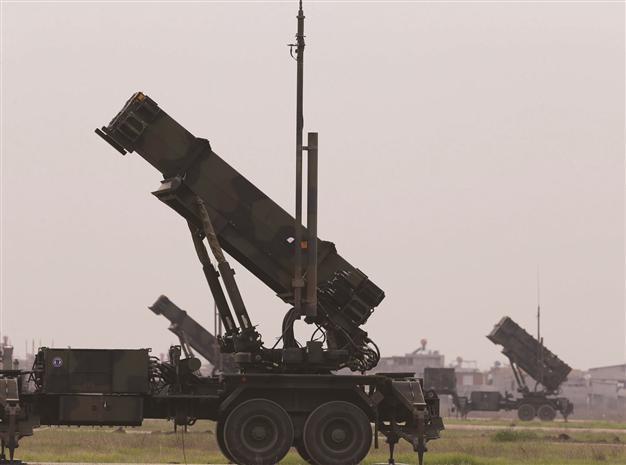Ankara’s move to Chinese air systems appals NATO allies
BURAK BEKDİL

The US Patriot air defense system, which is seen in the photo, is one of the systems competing for Turkey’s long-range anti-missile and air defense systems.
Turkey’s western allies look puzzled by a looming decision by Ankara to select Chinese long-range anti-missile and air defense systems which they think cannot be integrated into the NATO-sponsored early warning architecture currently deployed on Turkish soil.
“That would certainly leave many of us speechless,” said one senior diplomat from a NATO country. “Turkey has every right to choose its own air defense system but we do not quite understand the logic of opting for a Chinese system with no interoperability with the existing [NATO] assets.”
A NATO ally defense attaché in Ankara said that deploying a Chinese air defense system to protect Turkish airspace could have political repercussions. “Questioning Turkey’s geopolitical trajectory would then be legitimate,” he said.
Turkey’s defense procurement officials are about to wrap up their assessment on four rival solutions in a multibillion dollar program to build advanced long-range anti-missile and air defense systems, strongly leaning toward the Chinese bid. One defense official said that the government had come to the conclusion that the Chinese proposal was technologically satisfactory, allowed sufficient levels of technology transfer and was much cheaper than rival solutions. He said that the decision to select the Chinese contender was awaiting final approvals from Defense Minister Ismet Yilmaz and Prime Minister Recep Tayyip Erdoğan.
Turkey in January restructured the $4 billion program, dubbed T-LORAMIDS, which had originally been constructed as an off-the-shelf purchase.
The contenders’ off-the-shelf bids would remain valid, but the country’s procurement office, the Undersecretariat for Defense Industries (SSM), would ask bidders to submit parallel, co-production solutions. Erdoğan had given orders for the launch of feasibility studies on the “potential co-production” of the system.
The same month, SSM wrote to the bidders and asked them to send letters of intent for any co-production deal. The bidders are a U.S. partnership of Raytheon and Lockheed Martin, offering the Patriot air defense system; Russia’s Rosoboronexport, marketing the S-300; China’s CPMIEC (China Precision Machinery Export-Import Corp.), offering its HQ-9; and the Italian-French consortium Eurosam, maker of the SAMP/T Aster 30. T-LORAMIDS, has been designed to counter both enemy aircraft and missiles. Turkey presently has no long-range air-defense systems.
Integration problem worries Western diplomats warn that Turkey may be deprived of the capability to integrate the Chinese-Turkish system into Turkey’s mostly NATO-owned early warning assets.
“I cannot comment on how the [U.S.] administration would react to that. But I can tell you that integrating a Chinese or Chinese-Turkish air defense system into NATO assets may not be a good idea,” a U.S. diplomat said.
Defense sources admit that U.S. officials had warned the “procurement bureaucracy” several times about the potential difficulties in achieving interoperability if Turkey decided to go for a Chinese or a Russian architecture.
“I see that the Turks remain defiant. But I do not think it would be practically possible to integrate neither the air defense nor the anti-missile components of the planned Turkish-Chinese architecture into NATO radars,” a London-based Turkey specialist said. “The Turks would have the same problem if they chose the Russian system, but I think for the Americans China represents a more direct threat.”
About half of Turkey’s network-based air defense picture (radars) have been paid for by NATO, according to a defense official. They are part of the NATO Air Defense Ground Environment. “Turkey can always decide to build a standalone system. But in that case, abstracting the air defense system from NATO assets would mean that Turkey will lose half of its radar capabilities,” said one defense analyst.
He said Turkey would need interface data to make its own air defense architecture interoperable with NATO assets, primarily data on the Identify Friend and Foe system. “This is top secret and cannot be installed into any Chinese system,” the analyst said.
Another major question, he said, is “how would Turkey have in its possession a made-in-China IFF system, and how would that system be integrated into its fleet of F-16 aircraft?”
“There is an important degree of incompatibility here and all in all any Chinese-Turkish co-production program would look problematic,” he said.
